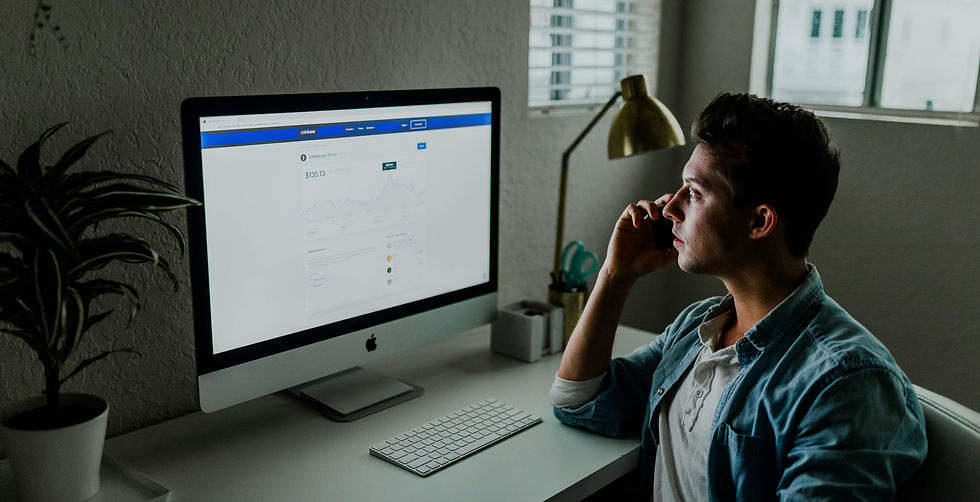Best B2B lead generation strategies for local SEO
- Wisdom Ukpeh

- Aug 14
- 5 min read
Updated: Aug 16
If you area B2B manufacturer, SaaS, or service provider and want to invest in local SEO, this article outlines how to build a local SEO lead gen strategy that shortens your sales cycle. A strong house starts with a solid foundation. So does a successful local SEO strategy. Let’s dive in!
What is local SEO?
Local SEO is a strategy that helps businesses attract nearby customers by improving their visibility in local search results. While B2C companies benefit directly from proximity, B2B brands must tailor local SEO efforts due to limited walk-in traffic and complex sales funnels.
Before we discuss this customised SEO strategy, let’s lay the solid foundation for the plan. Building a house without a strong foundation guarantees its collapse. The same analogy applies to starting your local SEO journey. So, what should you do to establish a strong local SEO foundation?
The foundation of local SEO
Create an account on Google Business Profile (GBP): Use GBP to register your business name, website, location, social media handles, and contact details. This tool helps your brand rank on Google’s SERP whenever a B2B buyer needs your service.
Obtain customer reviews: These reviews help establish your brand’s trustworthiness. It also signals to Google crawlers that you’re an expert in your industry.
Use local directory sites: This is where you upload your business for local listings. Examples of such sites include Clutch, G2, and ThomasNet. Here, regional B2B customers can interact with your brand and patronise your service.
Keyword strategy: Use keywords that include your service and location. For example, “custom aluminum enclosures near me.” You should also encourage your customers to search your brand name plus the service you offer. This signals to the search engine that you’re an authority in that niche.

B2B lead generation strategy for local SEO
Now that we have the foundation in place, let’s discuss how to build upon it. This section outlines a step-by-step blueprint that follows the inbound marketing system.
Step 1: Attract stage – build trust
B2B buyers’ first principle is trust. As a B2B brand, you should aim to build trust over awareness because buyers are problem-aware. To build trust, use GBP and vetted local directories to build credible backlinks to your website. Here’s how it applies to different B2B sectors.
For B2B manufacturers
Use specific local directories like ThomasNet, IndustryNet, and Kompass to build high-quality backlinks to your site. Empire Group increased its visibility online by 86.5% and generated 40% leads using local directories
If your company isn’t in a walkable commercial area, create a landing page with embedded Google Maps, driving directions for delivery trucks, and photos of your plant.
For B2B service providers
Google Business Profile is the best tool for attracting organic leads.
List your service on local directories such as Clutch. Clutch helps you build trust through reviews and ratings
Sponsor local webinars and charity events that align with your service. For example, B2B logistics brands can sponsor a local logistics expo and link their landing page from the press coverage.
You can also be a partner or speaker at local events
For B2B SaaS
Feature partners and distributions of the location you want to target on your website. This strategy instantly builds trust with local B2B buyers.
Since B2B SaaS operates in remote locations, use content marketing to build trust. Your content plan should follow this framework:
ToFu: Top of the Funnel content
MoFu: Middle of the Funnel content
BoFu: Bottom of the Funnel content

Stage 2: Engage stage – share expertise and thought-leader content
Your regional B2B lead searched for a query and found your landing page or Google Business Profile. He developed trust for your B2B brand, yet he wants to know more about your offer. The engage stage guides your B2B buyers from problem-aware to qualified lead.
The key tool for converting your audience into qualified leads is content creation. Leverage social media, podcasts, blog posts, and email marketing to prove your expertise and experience. Here’s how it applies to different B2B sectors.
For B2B manufacturers
Use Instagram, YouTube, or TikTok to share your work process. You can share behind-the-scenes content to engage with potential B2B buyers.
Use email marketing to qualify your leads. You can also send updates on new product lines and services. Email marketing helps you segment, retarget, and convert B2B leads.
Invest in content marketing. Share how-to blogs and DIY (do-it-yourself) content. Use region-specific examples, language, and keywords to localise your content
For B2B service providers
This B2B sector requires high trust from B2B buyers, so create co-authored content with regional influencers. This is a powerful way to build credibility with regional buyers.
Get featured on local podcasts or radio stations that align with your service. Podcasts have become a mainstream channel for B2B marketing.
Send monthly email campaigns with customer success stories to nurture leads
Create localised blog posts and video tutorials to rank for regional keywords. Bridge Coffee Roasters experienced 40% organic traffic growth after localizing their content
Posting weekly thought-leader content on LinkedIn positions your brand as an expert and keeps you top of mind with local buyers.
For B2B SaaS
Organise localised webinars to showcase your B2B solutions
Email marketing is an essential tool to engage and qualify leads
Use MoFu content like comparison guides or solution briefs to drive engagement from leads who are already problem-aware
Use curated emails to provide top-tier value to your B2B leads

Stage 3: Delight stage – share results
Your regional B2B lead, Paul, found your brand content on Google’s SERP. He read your content and perceived your brand as trustworthy. Yet, Paul needs to solidify his trust in your brand. The delight stage amplifies your local B2B buyer’s trust.
The core tools for strengthening your lead’s trust are localised case studies and testimonials. These tools apply to all B2B sectors. Here are some pro tips to leverage these tools:
Prioritise video over written testimonial. Video testimonials can improve organic search traffic to a website by up to 157%
On your website, create a separate CTA and landing page for your case study content. This strategy helps segment each click-through as a qualified lead
Design a loyalty program for your B2B customers to strengthen the bond. Brandmovers helped an industrial distributor increase sales by 25% with their B2B loyalty program
Offer free trials and demos. This strategy works better for B2B SaaS companies.
Roofing your strategy
In this article, we gave you the foundation and materials to build your local SEO strategy. Now let’s add the cherry on the cake.
What should you consider when designing your B2B local SEO lead gen strategy?
Conduct in-depth research on the region you want to target before strategising.
Ensure you localise all your brand content. Localisation equals more trust from your lead.
Ensure your Google Business Profile and directory listings include updated images, location-specific keywords, and alt text to prepare for visual search trends like Google Lens.
Use Moz or Semrush to check NAP citations.
Use schema markups to show ratings and customer reviews when B2B buyers search for your service. Tags like LocalBusiness, Product, or Review help AI match your content with local searcher intent.
What industry-based B2B local SEO strategy would you suggest for lead generation? Let’s know in the comment section.



Comments